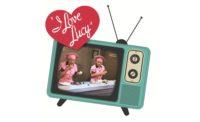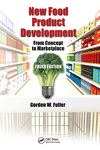Surge in snacking replaces breakfast, lunch, and dinner
Consumers, especially younger ones, are increasingly replacing meals with munchies.

Images courtesy of FORCE pkg
In my studio, my staff is constantly snacking, especially millennials and Gen Z’ers. From chips and flaming hot everything to muffins and cookies, snacking rules. What I’ve also noticed lately is that snacking has taken over as a main form of eating, replacing more formal, sit-down meals. As packaging experts, my team is always chatting about what trends are popping up in, not only the packaging but the huge variety of snacking categories and flavor trends.
What’s on the horizon for the snacking industry, in particular within my industry of packaging design? Let’s take a look.
Overall trends
Snacking is a booming trend-churner. Worldwide demand for snacks stands at a revenue of $507.2 billion in 2023. This year, snacking for a treat, to replace a meal, or out of boredom are core to why people snack. But as with all food categories, snack prices rose 12.6% in 2022. Due to concerns about overall inflation, three out of 10 people plan to reduce snack purchases. But it’s still considered a cheaper option than full meals. About 70% of millennials said they prefer snacks to meals. Plus, nine out of 10 people said they replace at least one meal weekly with a snack, with 7% saying they eat no formal meals whatsoever.
Snack packaging trends
Now that we’ve identified how big this industry is, let’s take a look at what this means in the world of packaging. The increasing shift back to more traditional in-office attendance policies (at least part-time), plus kids returning to sports and other extracurricular activities, makes snacks a portable necessity once again. Thus, portability and portioning are big this year.
From individual chip packages and portion-controlled nut snack mixes, innovation in the grab-and-go context is big. Snacks containing multiple items are often in containers that are divided to keep products intact and fresher. Sargento, with their Balanced Breaks line of snacks, and P3 from Oscar Meyer, are two options that capitalize on this concept.
With a variety of carb and protein options, P3 products make use of a 2-to-1 carb-to-protein ratio, which “allows our body to maximize its exercise potential and energy release capacity.” The packaging plays well into this concept: all the various snacks are in separate compartments and the design feels clean and simple.
Interestingly, P3 recently partnered with the UFC, the world’s foremost mixed martial arts organization, a great partnership to align P3 with strength and fitness. 
In addition to the increase in portable snacks, the disruption the world has seen is leading shoppers to seek snack brands that bring them comfort, lightness, and honesty during trying times. How does this translate to recent packaging design trends? Here are five examples.
Bold fonts/shapes: Using typography as the centerpiece is still hot. A burst of color, pattern, and things that don’t quite go together but somehow work. PopChips’ recent redesign is a great example of this trend, as well as one of the latest Reese’s line extensions: Creamy and Crunchy Peanut Butter Cups. A just-released Designanalytics head-to-head quantitative purchase preference test with PopChips shows that consumers like the redesign a lot, with a Committed Preference Advantage of +7.4 pts and an Overall Preference Advantage of +21 pts.
Minimalism: This trend is being seen across all types of products; everything from perfume to dairy, to sweets & snacks. Minimalist packaging design is a great way to communicate better with consumers at retail. It stands out on the shelf and says, “this is quality.” One great example is the redesign of Kraft's Jet Puffed Marshmallows. When redesigning packaging, your core customer must be top of mind. When Designalytics detected the packaging change, they asked 252 marshmallow consumers which of the two designs they would rather purchase. While some preferred the new design, a vast majority did not. The revamped design scored only 9% on measures of committed purchase preference (a proprietary metric that is highly predictive of sales outcomes), while the prior design scored 38%. Given that a 4-point gap is sufficient for Designalytics to predict a sales increase or decline with 96% accuracy, Jet Puffed’s gap of 29 points likely doesn’t bode well for the brand. Time will tell.
The 60s meet the 90s: This is simply a way of saying “everything once old is new again…and again…and again. From Nirvana-inspired fonts to designs that look straight out of Haight-Ashbury, the rock and roll ethos of boldness with ideology is back in a big way. Zapp’s Voodoo Chips and Mythical Meats are great examples, as well as HIPPEAS.
Everything is a QR code away: It’s all about connectivity. QR codes allow brands to invite consumers into their world, whether it’s how to use a product to its best effect, or to explore social media channels. QR codes deliver packaging from long-form messaging because the code takes consumers to video content or animation in ways never imagined. One of my favorites is Mezcla Protein Bars. The QR code is simply integrated into the primary imagery, rather than the familiar black-and-white square. They embraced the idea and made it sexy.

Earth friendlier than ever: Eco-friendly packaging is moving into a place of authentic ethical and biodegradable options, which shows a brand’s commitment to a sustainable future. Non-recyclable plastics are out as brands shift to more biodegradable options. These include paper and cardboard, compostable packaging, and edible straws and seaweed-based packaging. Other important trends include certifications that support the social and environmental commitments the brand supports, cause-based marketing, and the emphasis on “locally sourced.” One standout brand that is turning sustainability on its head is Incredible Eats, a line of completely sustainable (and edible) cutlery. As featured on Shark Tank, this innovative product line of forks, spoons, sporks, and straws is made of completely edible materials (ingredients, perhaps?), like brown rice, wheat, oats, and chickpeas. The packaging features playful color variations and crisp images of foods to enjoy with your crunchy cutlery. Can you imagine, actually eating your spoon when you’re done with your salad? Incredible, indeed.
Reality check
Although sustainability is at the top of the list for consumers and brands alike, making it happen in the U.S. has its challenges. According to a recent GlobeNewswire report, “the high costs associated with sustainable packaging materials and the lack of infrastructure for waste management are some of the factors restraining market growth.
However, I would be remiss if I didn’t close this article with a shoutout to nature’s perfect portable, on-the-go snack. Self-contained in its own sanitary packaging, and brightly colored for all shoppers to see. I’m talking about the almighty banana. Considered the most consumed fruit in America, shoppers eat a whopping 26 pounds of bananas each year. Way to go, Mother Nature!
Looking for a reprint of this article?
From high-res PDFs to custom plaques, order your copy today!









